Insights into VS2 Diamonds: Characteristics and Value
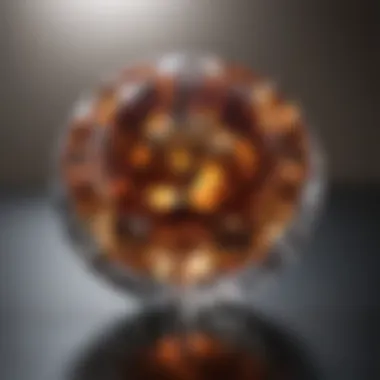
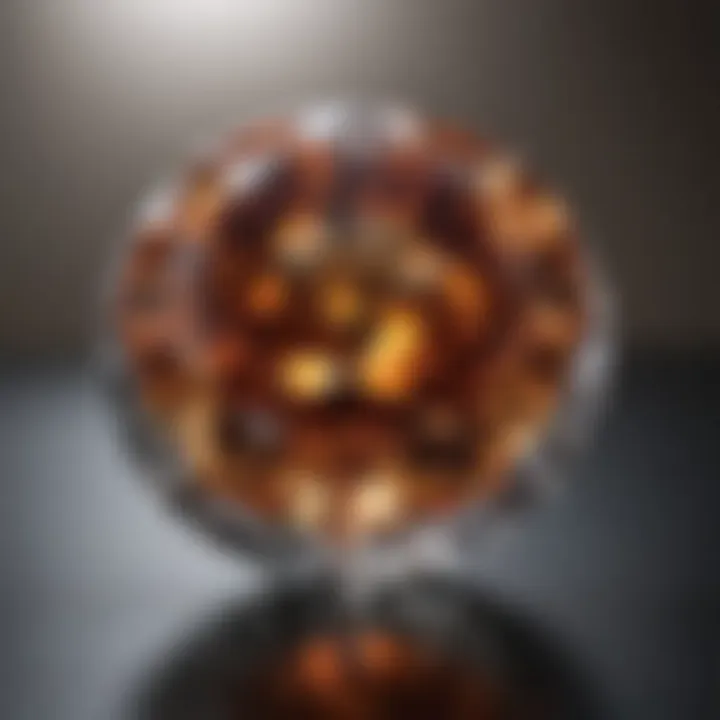
Intro
When diving into the fascinating world of diamonds, it’s easy to get lost in the sea of information surrounding these precious stones. Among the myriad of choices, VS2 diamonds emerge as a standout option for many enthusiasts and collectors alike. This section aims to lay the groundwork for understanding what makes VS2 diamonds significant in the broader spectrum of gemstones.
Diamonds are not just commodities; they represent a confluence of natural beauty, history, and cultural significance. As we delve further, we will uncover the details that differentiate VS2 diamonds from their counterparts, helping you make informed decisions that resonate with your personal and aesthetic values.
Gemstone Overview
Definition and Characteristics
VS2 diamonds belong to the clarity grading range, specifically the VS (Very Slightly Included) category. These diamonds exhibit only very minor inclusions that are difficult to see under 10x magnification. With a clarity grade of 2 within this classification, these stones present a balance between value and visual appeal. Overall, their characteristics can be summarized as follows:
- Clarity: Minor inclusions that cannot be seen with the naked eye.
- Brilliance: Exceptional light performance, reflecting light sharply and vividly.
- Color: Often colorless or near-colorless, enhancing their overall allure.
Classification of Gemstones
Gemstones fall into various categories, with diamonds being classified primarily based on clarity, color, carat, and cut. Each of these factors plays a pivotal role in determining a gemstone’s overall value and aesthetic. Within this classification, diamonds are further delineated into:
- Natural Diamonds: Formed over millions of years beneath the Earth's surface.
- Synthetic Diamonds: Man-made counterparts that aim to replicate natural diamonds properties.
- Fancy Color Diamonds: These come in shades beyond the standard colorless, giving rise to an extensive palette that captivates collectors.
Properties of Gemstones
Physical Properties
The allure of diamonds can also be attributed to their unique physical properties. In particular, diamonds are known for their:
- Hardness: Scoring 10 on the Mohs scale, diamonds are the hardest natural material, making them ideal for everyday wear.
- Density: Diamonds have a high density, which contributes to their heft and luxurious feel.
- Luster: Diamonds exhibit a brilliant, glassy luster that radiates sophistication.
Chemical Properties
At the molecular level, diamonds are composed of carbon atoms arranged in a crystal lattice structure, which is what grants them their exceptional hardness and resilience. The purity of a diamond can greatly influence its quality and desirability. VS2 diamonds, for example, are typically nearly pure with minimal nitrogen impurities, assisting in their color integrity.
"The finer the diamond, the deeper the value it holds, both in aesthetics and sentiment."
As we continue to explore the world of VS2 diamonds, keep in mind the importance of understanding not just the visible characteristics but also the underlying properties that contribute to their overall worth. An informed perspective will not only enhance your appreciation for these gems but also empower you in any gemstone-related endeavor.
Understanding Diamonds
Diamonds, often viewed as the ultimate symbol of luxury and commitment, hold a cherished place in both the jewelry realm and the broader gemstone market. Their allure transcends mere aesthetics; diamonds embody a complex amalgamation of rarity, history, and geology. \n\nIn this section, we venture into the foundational aspects of diamonds, focusing on how understanding their formation and characteristics not only enriches appreciation but also aids in making informed decisions when purchasing or evaluating diamonds, especially those falling within the VS2 category. Grasping concepts such as their natural formation, the impact of the Four Cs—cut, color, clarity, and carat weight—is crucial for collectors and enthusiasts alike.
\n### Formation and Natural Process
Diamonds are formed deep within the Earth under extreme temperature and pressure conditions, typically found at depths of about 100 miles. Over the course of millions to billions of years, carbon atoms bond in a crystal structure, creating the scintillating gem we value highly today. Interestingly, geological activity can bring these precious stones closer to the surface through volcanic eruptions. This journey from the depths of the Earth to a sparkling piece of jewelry showcases the natural processes that contribute to their uniqueness and worth.
\nAn important aspect to note is the age of diamonds—some stones are over a billion years old, carrying with them a history that is millions of years in the making. As a result, the appreciation for diamonds often evolves into a fascination not just with their beauty but also their story.
The Four Cs of Diamonds
The Four Cs are paramount in the evaluation and selection of diamonds. Each characteristic holds significant weight in determining the diamond's overall quality and market value.
Cut
Cut refers to how well a diamond has been shaped and polished. A fine cut can dramatically enhance a diamond's brilliance and sparkle. Diamonds with an excellent cut reflect light beautifully, captivating the observer. One notable aspect is that this is the only C that a diamond cutter can influence, making it a critical factor in the diamond's final appearance. Diamonds in the VS2 category often feature cuts that optimize their visual appeal. \n\nA well-cut diamond displays superior light performance. This characteristic is what ultimately makes it a popular choice among buyers intent on showcasing the beauty of their stones. When considering a diamond, the cut can either amplify or detract from its overall presence, so it is often seen as the most important of the Four Cs.
Color
Color grading in diamonds focuses on the absence of color; the less color a diamond has, the higher its value. VS2 diamonds generally fall within the near-colorless range, making them desirable for their eye-catching clarity despite some internal characteristics that may not be visible without magnification. \n\nThe subtle nuances of color can affect the visual warmth or coolness of a stone. Most buyers fancy diamonds that appear as colorless or near-colorless, as these tones allow for maximum reflection of light. One important note is that even a diamond with slight color retains the potential for captivating brilliance, especially when well-cut.
Clarity
Clarity assesses the presence of internal or external flaws, known as inclusions and blemishes, respectively. VS2 diamonds exhibit inclusions that are generally minor and not visible to the untrained eye. This characteristic allows them to maintain a high degree of visual clarity while being more affordable than higher-clarity stones. \n\nThe clarity aspect serves as a reminder that even with slight imperfections, diamonds can still be breathtaking in their beauty. Choices in VS2 diamonds provide an opportunity for enthusiasts to find remarkable stones without the price tag often seen with flawless examples.
Carat Weight
Carat weight indicates the size of the diamond, with one carat equivalent to 200 milligrams. Larger diamonds often command higher prices, but the relationship between carat weight and price can vary significantly depending on the other Cs. A one-carat VS2 diamond might capture more attention than a similarly priced fl, simply due to its robust appearance and visual weight. \n\nIn consideration, carat weight provides context for perceived value. Buyers should focus on the interplay of all four Cs, especially when investing in a specific category like VS2 that offers a blend of quality and accessibility in the diamond market.
Strong knowledge of the Four Cs empowers buyers to make informed decisions and deepen their appreciation for these remarkable gems.
Defining vs2 Clarity
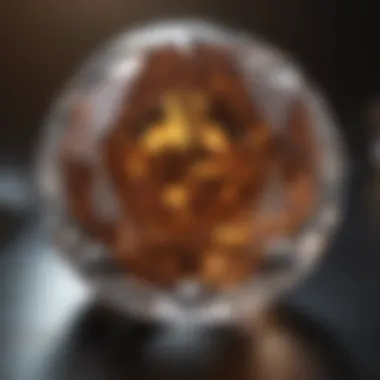
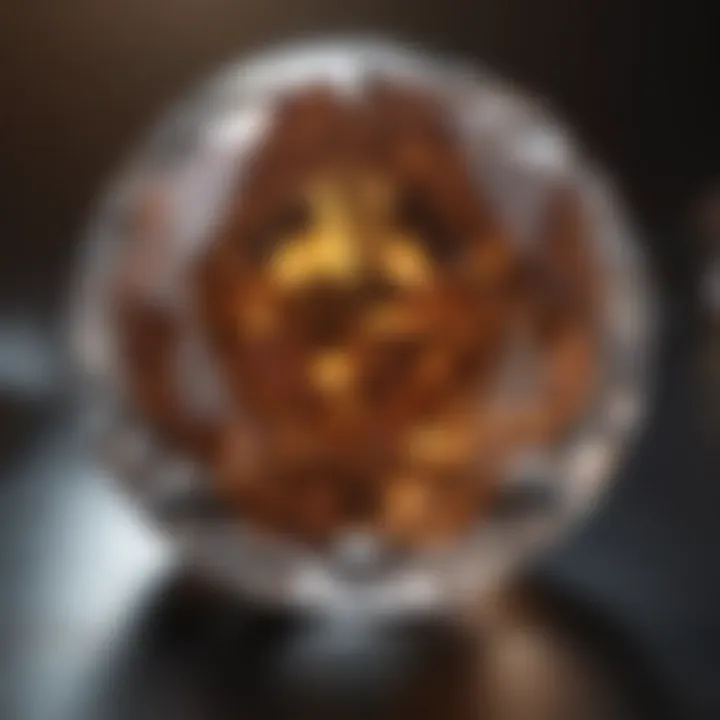
When discussing diamonds, clarity is a fundamental aspect that isn’t just about how clear a stone appears; it encompasses the idea of purity and the overall visual performance of the diamond. VS2 clarity is a classification on the clarity scale that indicates a diamond with minor inclusions that are difficult to see with the naked eye. Understanding this grade is crucial for collectors and enthusiasts as it affects both the aesthetic appeal and market value of the diamond.
Clarity Scale Overview
The clarity of diamonds is evaluated using a grading system that ranges from Flawless (FL) to Included (I). Here’s a quick breakdown of this scale:
- FL (Flawless): No inclusions or blemishes visible under 10x magnification.
- IF (Internally Flawless): No inclusions, but some blemishes are present.
- VVS1 and VVS2 (Very Very Slightly Included): Minute inclusions that are very difficult to detect.
- VS1 and VS2 (Very Slightly Included): Minor inclusions that are somewhat easy to see under 10x magnification; they do not detract significantly from the diamond’s beauty.
- SI1 and SI2 (Slightly Included): Inclusions are noticeable under 10x magnification but may not be visible to the average observer.
- I1, I2, I3 (Included): Inclusions are visible to the naked eye and may affect transparency and brilliance.
VS2 is particularly significant because it offers a harmonious balance between quality and value, often appealing to buyers who desire a gemstone that looks impressive yet is still accessible.
Characteristics of vs2 Diamonds
VS2 diamonds exhibit unique characteristics that can be fascinating to gemstone enthusiasts. Here’s what to look for:
- Inclusions: Generally, inclusions are slight and may range from small crystals to feather-like formations. These marks remain unobtrusive while allowing the diamond to let light through, enhancing its sparkle.
- Visual Beauty: Most VS2 diamonds will look incredible in jewelry settings. The inclusions may not be perceived by the casual observer, making them an excellent choice for engagement rings or special occasions.
- Value Comparison: When placed against higher clarity grades, VS2 diamonds often offer a more budget-friendly alternative while not sacrificing beauty. Many people find that they can purchase a larger stone with a VS2 grade rather than a smaller, clearer diamond.
- Aesthetic Compatibility: Diamonds in this clarity range adapt well to various cuts, and their visual performance shines particularly in commonly preferred styles such as Round Cut and Princess Cut.
"A VS2 diamond strikes a fine balance: high enough clarity for desirability, yet below the threshold of exorbitant pricing, tailored for those in love with beauty."
Comparing vs2 with Other Clarity Grades
When it comes to choosing a diamond, clarity plays a significant role in the overall value and visual appeal. Diamonds are graded on a scale from Flawless to Included, with various grades in between. Understanding how VS2 stands against other clarity grades such as VS1 and SI1 can provide an enriching perspective for collectors and gemstone enthusiasts.
vs1 vs. vs2
The distinction between VS1 and VS2 diamonds centers around subtle variations that can affect both their value and beauty. VS1 diamonds typically exhibit minor inclusions that are only visible under 10x magnification. This implies a high level of clarity, making VS1 diamonds highly desirable in the market. On the other hand, VS2 diamonds have inclusions that may be slightly more obvious but often remain invisible to the naked eye.
This may seem like a small difference, but it can also reflect in the pricing. VS1 diamonds usually command a higher price due to their slightly superior clarity. However, the difference in appearance can be negligible to many, thereby making VS2 diamonds an attractive option for those who want beauty without breaking the bank.
si1 vs. vs2
When comparing SI1 and VS2 diamonds, the gap widens a bit more. SI1 diamonds, or "Slightly Included" diamonds, contain inclusions that are more apparent and can sometimes be seen with the naked eye. In contrast, VS2 diamonds generally possess inclusions that are not readily visible unless inspected closely.
This difference underscores an important point in the diamond market: carat and visual appeal often take precedence over technical specifications. Many collectors and jewelry enthusiasts opt for VS2 diamonds, particularly because they provide an excellent balance of quality and value, making them ideal for styles like engagement rings where impact is essential. Another factor to consider is how light interacts with these inclusions, which can affect brilliance. VS2 diamonds, due to their slight inclusions, may even present a more unique sparkle if cut well.
Assessing the Eye Clean Threshold
The concept of "eye clean" is pivotal when comparing clarity grades. Generally, a diamond is considered eye clean if there are no visible inclusions to the untrained eye when viewed from a standard distance. In this context, many VS2 diamonds can meet this criterion, even though technically they may yield a minor flaw.
Some individuals may hold by their standards that a VS1 quality is necessary, but finding a VS2 diamond that is classified as eye clean can be an incredible win for a buyer.
"The right diamond can provide the same sparkle whether it's a VS1 or a well-chosen VS2. For the discerning eye, selecting for beauty often trumps the nuance of clarity grading."
In sum, when exploring the distinctions between VS2 diamonds and their clarity counterparts, consumers should consider not just the grading but also the aesthetic choices that align with their personal taste. Understanding these fine gradations in the clarity spectrum empowers buyers to make informed decisions as they navigate this beautiful world of diamonds.
The Role of Cut in vs2 Diamonds
The cut of a diamond plays a critical role in its overall aesthetic and performance. When exploring vs2 diamonds, one might think clarity is king, but the cut is equally essential—if not more so. A well-executed cut can amplify the stone's brilliance, showcasing its beauty while influencing how light interacts with the diamond. This section will delve into how the cut not only affects visual appeal but also enhances the brilliance of a vs2 diamond, making informed decisions much simpler.
Impact of Cut on Light Performance
When light enters a diamond, its path is determined heavily by the cut. A well-cut vs2 diamond can reflect light in such a way that it appears brighter and more vibrant. Conversely, a poorly cut diamond, even with high clarity ratings, can appear dull and lifeless. The reflection, refraction, and dispersion of light within the stone depend on angles, proportions, and the depth of each facet, all of which are dictated by the cut.
For vs2 diamonds specifically, the clarity is notable, but without an appropriate cut, the shiny potential can easily get lost. A diamond’s cut can be viewed as its performance profile, affecting its dispersion—how the colors split—and brilliance, which is the overall light reflection. In essence, an impressive cut can elevate a vs2 diamond into the realm of captivating gemstones.
Popular Cuts for vs2 Diamonds
The cut can be a huge driver of choice for buyers when it comes to vs2 diamonds. Each cut possesses unique attributes and appeals to different preferences, making it crucial to understand what each style brings to the table. Here are some of the most favored cuts for vs2 diamonds:
Round Cut
The round cut remains the top seller year after year. Its brilliance and timeless appeal make it a classic choice for any jewelry piece. Round cuts have 58 facets, designed specifically to maximize light return, ensuring exceptional sparkle.
- Key Characteristic: Its perfect symmetry leads to the highest level of brilliance among cuts.
- Why Popular: The round shape is versatile, fitting seamlessly with various styles, from traditional to modern settings.
- Unique Feature: The way it adeptly handles light gives it a considerable edge in showcasing sparkle—an essential factor for vs2 clarity diamonds.
- Considerations: While its popularity comes with a higher price, especially for well-cut rounds, many see it as a worthy investment since the cut significantly enhances the diamond's appearance.
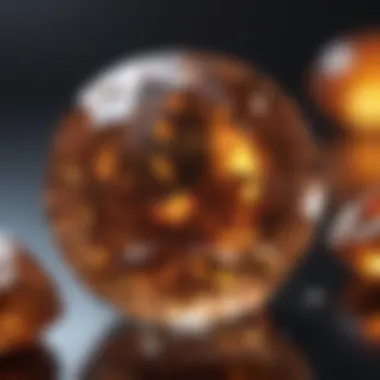
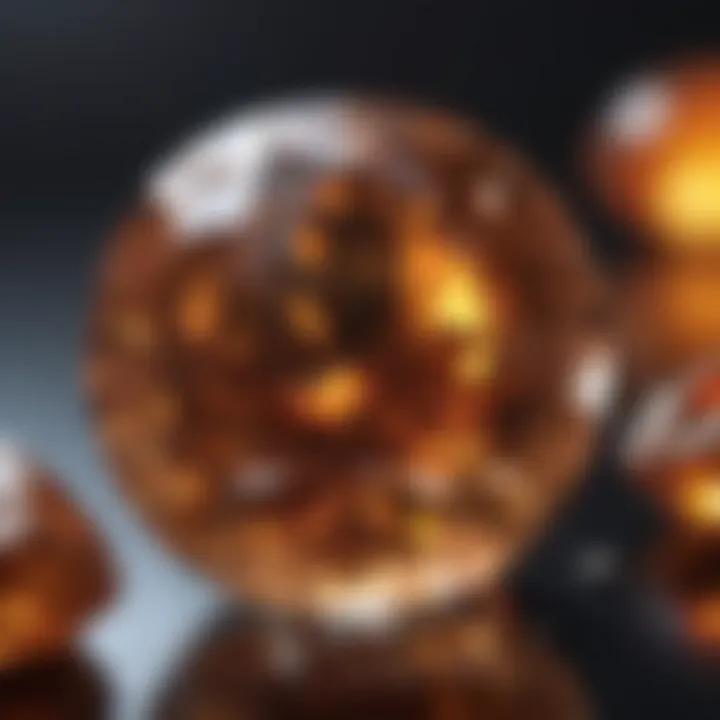
Princess Cut
The princess cut is another trendy option, especially among those who gravitate toward square shapes. Known for its contemporary silhouette, this cut offers a less expensive alternative without compromising on visual allure.
- Key Characteristic: The cut offers remarkable brilliance while maintaining a distinctive shape.
- Why Popular: It pairs well with a variety of settings, catering to those seeking that modern flair without losing the classic charm.
- Unique Feature: The intricate cutting style allows for a bit more flexibility in pricing while still retaining impressive sparkle.
- Considerations: It’s worth noting that princess cuts can be prone to chipping due to their pointed corners, so care must be taken.
Emerald Cut
Emerald cuts are known for their step-like facets and a unique, sophisticated look. Unlike round and princess cuts that rely heavily on brilliance, the emerald cut emphasizes clarity and color, making it an appealing choice for vs2 stones.
- Key Characteristic: The elongated shape and open facets highlight the diamond's clarity over its brilliance.
- Why Popular: Buyers who appreciate elegance often gravitate towards the emerald cut.
- Unique Feature: Its striking profile enables wearers to show off the diamond's internal characteristics, often proving it can be as captivating as sparkle.
- Considerations: However, because of its focus on clarity rather than sparkle, any imperfections become more visible, making quality grading paramount.
The cut of your diamond, especially in the case of vs2 beauties, can make a world of difference in your purchase—a balance of aesthetics, price, and emotional value do establish unique gems.
Each cut brings a distinctly different character to the table, influencing not just pricing but also personal connection. Understanding these elements can aid in making choices that truly resonate.
Color Considerations for vs2 Diamonds
Understanding the color of a diamond is crucial when evaluating its overall beauty, especially for vs2 diamonds. The importance of this topic is often understated, yet the interplay of color and clarity creates a narrative that informs both buyers and sellers about what truly defines value in these gemstones.
The color grading system used for diamonds ranges generally from D (colorless) to Z (light yellow or brown). However, when it comes to vs2 diamonds, a more nuanced appreciation is needed because their clarity can reflect and refract light in interesting ways combined with their color quality. This is where a buyer's educated choice comes into play.
Understanding Color Grading
Color grading in diamonds isn’t a simple task. It involves examining the stone under controlled lighting conditions with professionals trained to pinpoint subtle differences. The GIA (Gemological Institute of America) is known for its stringent grading system, which sets the standard for the industry.
- D-F: Colorless; the highest quality, ideal for those seeking pure white stones.
- G-H: Near colorless; slight tint may barely be noticeable.
- I-J: Faint color; at certain angles, the yellowish hue can appear more pronounced.
- K-Z: Rising levels of color that are increasingly evident.
For vs2 diamonds, a grading within G-H is generally preferred, as it strikes a balance between beauty and cost without sacrificing brightness. It's worth noting that one’s expectations play a big role. The surrounding metal of a ring or pendant can influence how color appears, making it another variable to keep in mind.
Color Preferences in vs2 Diamonds
When discussing color preferences in vs2 diamonds, personal taste and the intended purpose of the jewelry become important factors. For instance, a vintage-inspired ring might benefit from a warmer hue, enhancing nostalgic aesthetic. Meanwhile, modern styles often favor the cool, pristine look of near colorless stones.
Key considerations for color preferences:
- Setting Color: White gold or platinum can make diamonds appear whiter, while yellow gold might enhance the warmth in a stone.
- Lighting: Viewing conditions greatly affect how color is perceived. Natural light, incandescent light, and fluorescent light all cast different hues.
- Shape and Cut: Different cuts can either magnify or mute color. A well-cut round brilliant diamond, for example, can reflect light in ways to minimize color visibility.
"Choosing the right color is like painting a canvas; each element contributes to the overall masterpiece."
Ultimately, educating oneself on these aspects leads to more informed decisions and a greater appreciation for the craftsmanship involved in creating a vs2 diamond. Properly understanding color ensures that each potential buyer can find a stone that resonates with their individual style and taste.
Market Value of vs2 Diamonds
Understanding the market value of vs2 diamonds is crucial for anyone looking to invest in these exquisite gemstones. The price of a diamond is affected by a multitude of factors. For collectors and enthusiasts alike, knowing how these variables interplay can make the difference between a sound investment and a regrettable purchase.
There is a certain prestige that comes with owning a vs2 diamond. This clarity grade suggests a near-perfect appearance to the naked eye, making it appealing to buyers who appreciate both beauty and quality. Therefore, acquiring knowledge about what drives the market price can empower consumers, helping them navigate the intricacies of purchasing versus simply falling for a sparkling stone.
Additionally, the market value isn't just about the inherent beauty of the diamond. Factors such as rarity, consumer demand, and societal trends can sway prices like a leaf caught in the wind. Let’s delve into the specifics of these factors that influence the price of vs2 diamonds.
Factors Influencing Price
Several elements contribute to the pricing of vs2 diamonds. Recognizing these can provide clarity for potential buyers:
- Quality Factors: The Four Cs—cut, color, clarity, and carat weight—play a massive role in the pricing. Among these, clarity stands out, especially with vs2 diamonds, because these stones typically have fewer inclusions than their si1 counterparts. A well-cut vs2 diamond can fetch a higher price due to its brilliance and fire.
- Market Demand: When the appetite for high-quality gemstones rises, prices tend to follow suit. Seasonality affects demand too, with weddings and holidays often prompting increased purchases.
- Rarity: The availability of diamonds in the vs2 range can impact pricing. If supply diminishes due to longer mining processes or strict regulations, prices can increase due to scarcity.
"Understanding these factors is key in the diamond marketplace, just like navigating through a forest requires knowing which trees to avoid."
- Economic Conditions: Broader economic influences, such as inflation or changes in disposable income, can directly impact consumer spending on luxury items—diamonds included. During prosperous times, sales of vs2 diamonds may surge; conversely, recessions can lead to a dip in demand.
Keeping these points in mind sets the stage for grasping how vs2 diamonds fit into the larger narrative of market value.
Demand Trends and Consumer Preferences
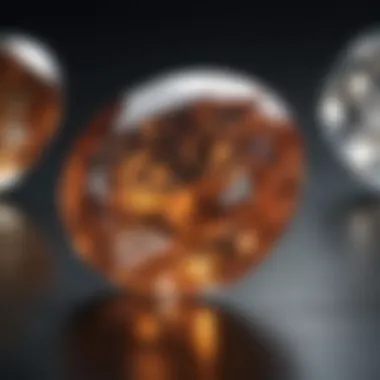
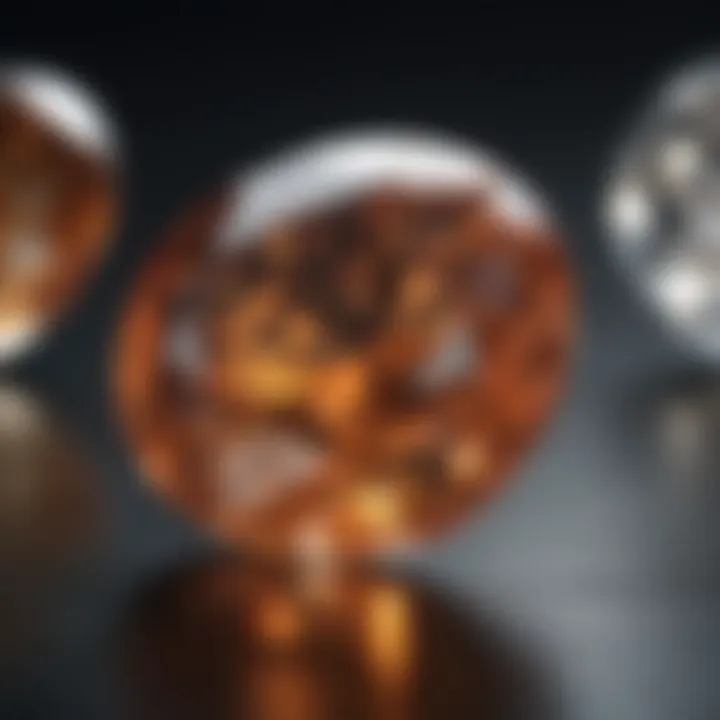
In recent years, the demand for vs2 diamonds has demonstrated noticeable fluctuations based on trends in consumer preferences. As buyers become more educated, they show a keen interest in diamonds that offer outstanding value for their investment.
- Shift Toward Ethical Sourcing: Consumers are increasingly inclined to understand the origins of their diamonds. This awareness is shaping the demand for ethical and conflict-free options. Buyers are willing to pay a premium for diamonds that assure ethical sourcing, which can affect prices for diamonds certified with responsible practices.
- The Rise of Lab-Grown Diamonds: The growing acceptance of lab-grown diamonds has also influenced the vs2 market. As these alternatives offer similar aesthetics at lower prices, traditional diamond prices may experience downward pressure, prompting buyers to reassess their preferences.
- Fashion and Personalization Trends: Individual style preferences have evolved, with many consumers favoring unique cuts and colors that match their personal tastes. Those searching for a vs2 diamond may be motivated by the desire to have a distinctive piece, thus encouraging a price premium for more uncommon styles.
In summary, understanding the intricacies of market values—alongside consumer behaviors—are essential for anyone looking to invest wisely in vs2 diamonds. While on the surface just a beautiful stone, a vs2 diamond supports a narrative rich with factors influencing its market value.
Ethical Sourcing of vs2 Diamonds
The conversation around ethical sourcing in the diamond industry has gained significant traction in recent years. This is particularly relevant for those considering vs2 diamonds, which sit at an appealing crossroads of quality and value in the marketplace. Ethical sourcing emphasizes the necessity of acquiring diamonds in a way that respects both people and the planet. This goes beyond simply purchasing a gemstone; it influences the entire supply chain from mines to the consumer.
A compelling reason for this focus is the complex issue of conflict diamonds—gems mined in war zones and sold to finance armed conflict. The repercussions of purchasing such stones extend far beyond the mere financial transaction. They can contribute to violence, human rights violations, and environmental degradation. For collectors and enthusiasts, knowing the source of one’s diamond is not just a preference; it’s a moral imperative.
Purchasing a vs2 diamond that is ethically sourced can provide satisfaction and peace of mind. By supporting ethical practices, one can promote a sense of responsibility within the industry. Furthermore, many jewelers are now transparent about their sourcing methods, making it easier than ever to choose diamonds that uphold humane and sustainable practices.
Understanding Conflict Diamonds
Conflict diamonds, often referred to as blood diamonds, have a notorious reputation that warrants close examination. These diamonds are harvested in regions plagued by warfare and strife, with revenues from their sale funding further conflicts. The repercussions can be devastating, not only for communities involved in the mining but also for the broader global market, which can suffer from reputational damage.
What’s troubling is the difficulty in ensuring that a diamond is conflict-free. Despite the Kimberley Process, established in 2003 to certify the origin of diamonds and prevent conflict diamonds from entering the market, there are still significant loopholes. The process relies on voluntary compliance, and some nations have been known to circumvent regulations. This creates a gray area where consumers may unknowingly purchase diamonds tainted by conflict.
Buyers should remain vigilant and inquire about certification practices. Some retailers provide grading reports that detail the sourcing of their diamonds, ensuring ethical practices. This not only aids in purchasing decisions but also fosters a more ethical market—a win-win situation for consumers and collectors alike.
Certification and Responsibilities
When it comes to ensuring ethical sourcing, certification plays a pivotal role. Buyers must look for certifications that go beyond the traditional diamond grading. Certifications from recognized bodies, such as the Responsible Jewelry Council and the Kimberley Process, can provide some measure of assurance. However, it is crucial to understand what each certification signifies.
Moreover, it's not simply the job of jewelers to ensure ethical sourcing. Consumers hold a significant responsibility too. Asking questions, demanding transparency, and educating oneself about the origins of diamonds can drive change within the industry. Moreover, a growing number of brands are adopting responsible selling practices that include supporting local communities and investing in environmental sustainability.
To sum it up, the ethical sourcing of vs2 diamonds is not just a trendy notion; it reflects a deeper understanding of where value lies in the investment. Diamonds can be beautiful and meaningful, especially when their journey is traced back to responsible practices. By prioritizing these considerations, collectors and enthusiasts alike can play a role in fostering a more equitable and sustainable diamond industry.
Caring for vs2 Diamonds
When one invests in a vs2 diamond, it is not merely a financial commitment but rather a deep connection to an exquisite piece of nature’s artistry. Caring for these diamonds not only preserves their beauty but also maintains their value over time. A trained eye can always spot a diamond in distress, and the allure of that clarity can diminish if proper care is neglected. Therefore, understanding how to maintain and preserve these gems is crucial.
Cleaning and Maintenance Tips
Keeping your vs2 diamond sparkling requires a few simple yet effective practices. Here are some expert recommendations to ensure your diamond remains a stunning focal point for years to come:
- Regular Cleaning: It's advisable to clean your diamond every few weeks using a gentle solution. A mix of warm water and mild dish soap works wonders. Avoid any harsh chemicals, as those can pit or damage the stone.
- Soft Brush Application: Use a soft bristle toothbrush to gently scrub hard-to-reach areas, especially beneath the stone where dirt might accumulate. Be careful though; excessive force can cause scratches.
- Ultrasonic Cleaners: Occasionally, employing an ultrasonic cleaner can bring back the sparkle. However, check that the stone is securely set before using this method. If in doubt, err on the side of caution.
"A little maintenance goes a long way in preserving that splendid brilliance and fire that diamonds are famous for."
- Avoid Wearing While Engaged in Activities: Remove your diamond ring before doing household chores or any activities that could lead to knocking or scratching the stone. Simple things, like washing dishes or exercising, can expose your gem to increased wear and tear.
By implementing these simple practices, you ensure that your vs2 diamond shines brightly and retains its value.
Storage Recommendations
Proper storage is essential for maintaining the integrity of your vs2 diamond. If you want your diamond to last a lifetime, consider these strategies:
- Individual Storage: Always store your diamond separately to prevent it from scratching other pieces. A soft pouch or a separate compartment in your jewelry box is ideal.
- Avoid Humidity: Store your diamonds in a dry place, as humidity can lead to tarnish or even damage over time. Silica gel packets can help keep moisture at bay.
- Use a Lined Box: Ideally, a lined jewelry box with a secure closure provides an optimal environment. This not only protects against dust and debris but also keeps your diamonds from rolling around and getting damaged.
- Secure Setting: If the diamond is part of your jewelry, ensure that the setting remains secure. Regularly checking for loose prongs or settings can prevent the loss of your precious stone.
The Future of vs2 Diamonds
The significance of understanding the future trajectory of VS2 diamonds cannot be overstated. As this segment of the diamond market continues to evolve, grasping the nuances of technological and cultural shifts is crucial for collectors, enthusiasts, jewelry designers, and even investors. This section focuses on two primary facets: the advancements in gemological technology and the changing expectations of consumers, which shape the landscape for VS2 diamonds.
Technological Advances in Gemology
Gemology is witnessing a rapid transformation with the introduction of cutting-edge technology. Innovations, such as spectroscopy and diamond simulants, have altered how diamonds are evaluated, graded, and sold. For instance, the rise in automated analysis techniques allows for precise assessments of clarity and color that were previously done by eye. This advancement means that VS2 diamonds, once considered slightly lower on the clarity scale, can now be evaluated with far better accuracy, giving buyers a clearer understanding of what they're purchasing.
Additionally, synthetic diamonds have risen to prominence, creating a ripple effect on market values. Lab-grown diamonds, which often boast impeccable clarity and color, are now more affordable alternatives, yet they present unique challenges. Consumers must now navigate the distinction between these two types of diamonds. The influx of technology also means that buyers can have greater access to information, allowing them to make informed choices about VS2 diamonds.
Changing Consumer Expectations
Shifts in consumer expectations are reshaping the diamond landscape. In recent years, shoppers have started prioritizing transparency and sustainability over mere quality indicators such as size or cut. Many buyers now find themselves inclined toward ethically sourced diamonds. This trend has pushed brands to ensure that their diamonds, including VS2 ones, come with provenance guarantees. The emphasis on ethical sourcing means buyers are more likely to consider the story behind the diamond, fostering a more profound connection between the buyer and the product.
Furthermore, aesthetic preferences are evolving. Consumers today seek a balance between uniqueness and traditional craftsmanship. Finds that once focused solely on clarity are now embracing the emotional and unique aspects of each diamond. This shift indicates a broadening appreciation for different cuts and settings that showcase VS2 clarity diamonds as stunning, without compromising their appeal.
"The world of diamonds is changing — it’s no longer just about the stone itself, but the entire experience and journey it represents."
Understanding these developments not only enriches the knowledge surrounding VS2 diamonds but also helps guide future purchases — a necessity for any collector or enthusiast aiming to stay ahead.



